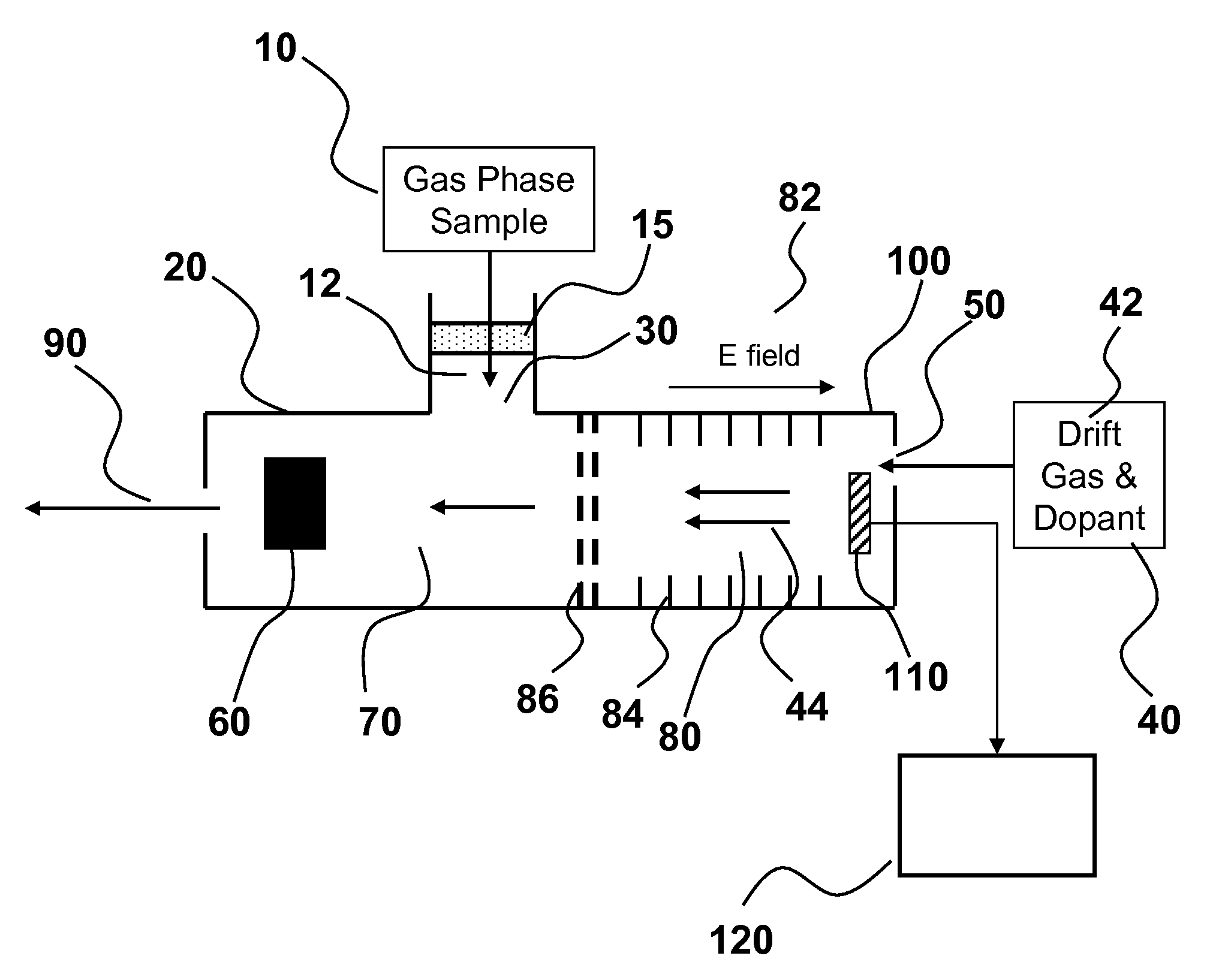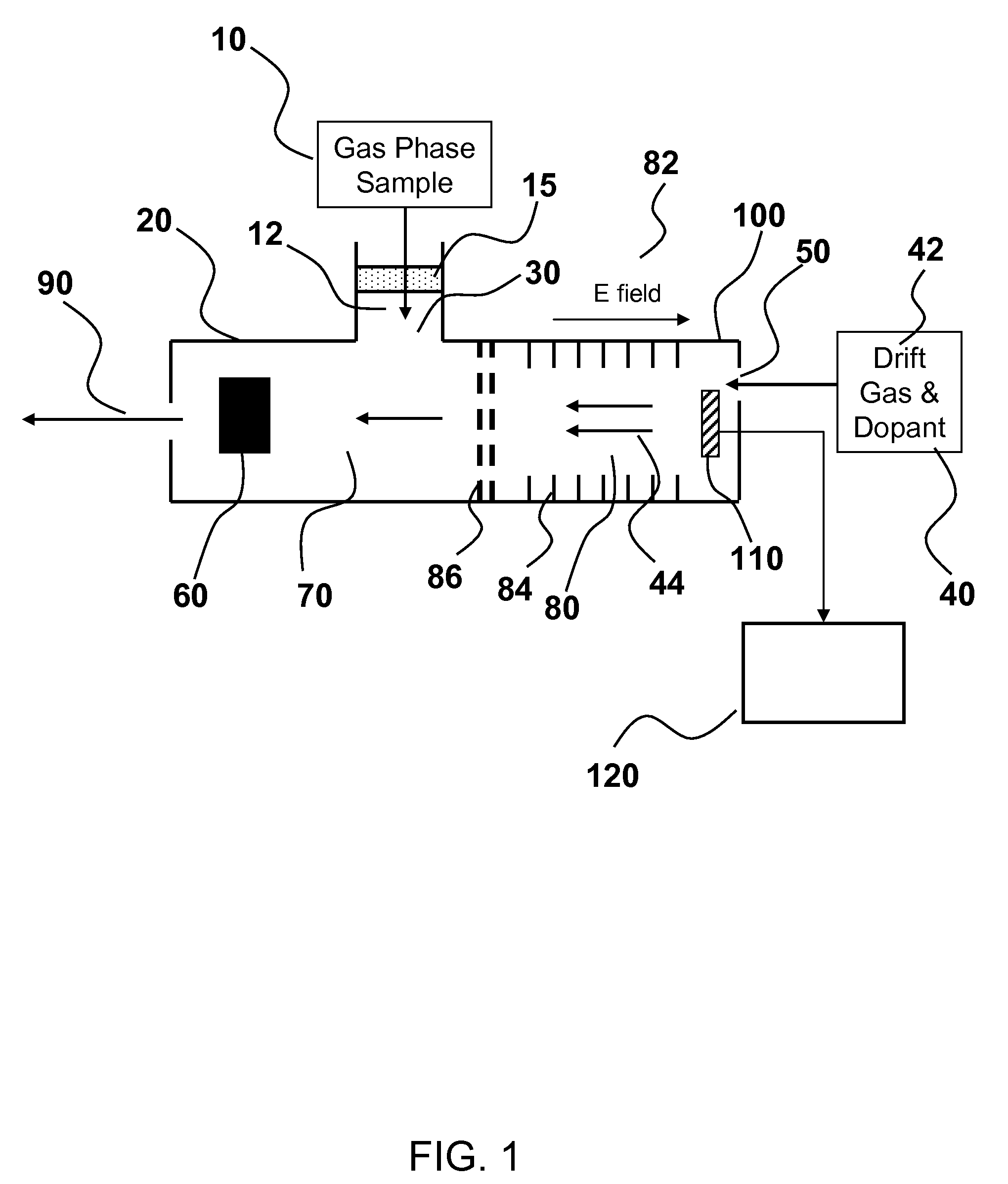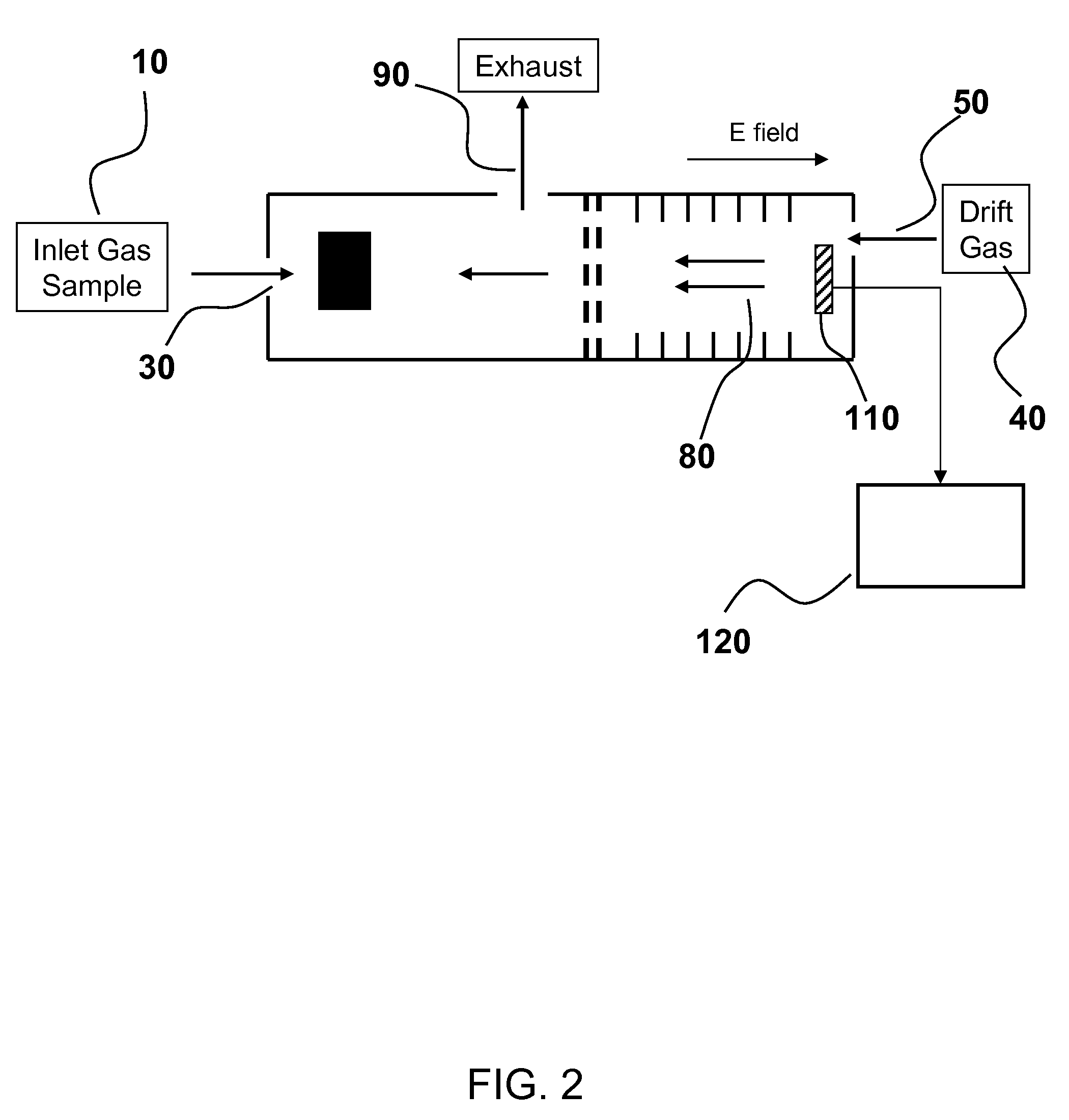Detection of analytes using ion mobility spectrometry
a technology of ion mobility and detection analytes, which is applied in the field of ion mobility spectrometers, can solve the problems of increasing the response time of instruments, reducing the effective lower limit of analyte detection, and consuming charge but providing no useful information, etc., and achieves fast response times, high sensitivity, and dominance of cluster formation and/or charge transfer
- Summary
- Abstract
- Description
- Claims
- Application Information
AI Technical Summary
Benefits of technology
Problems solved by technology
Method used
Image
Examples
Embodiment Construction
[0060]Referring to the drawings, like numerals indicate like elements and the same number appearing in more than one drawing refers to the same element. In addition, hereinafter, the following definitions apply:
[0061]“Ion” refers generally to multiply or singly charged atoms, molecules, macromolecules having either positive or negative electric charge and to complexes, aggregates, clusters or fragments of atoms, molecules and macromolecules having either positive or negative electric charge. Ions are generated in the present invention either directly or indirectly from an ionization means, such as a Ni63 source.
[0062]“Analyte ion” or “detectable ion” refers to ions derived from analyte(s) of interest in a gas phase sample that are capable of separation on the basis of mobility under an applied electric field, and detected in the present IMS methods and systems so as to characterize the identity and / or concentration of the analyte(s) in the sample. Analyte ions are formed in the pres...
PUM
 Login to View More
Login to View More Abstract
Description
Claims
Application Information
 Login to View More
Login to View More - R&D
- Intellectual Property
- Life Sciences
- Materials
- Tech Scout
- Unparalleled Data Quality
- Higher Quality Content
- 60% Fewer Hallucinations
Browse by: Latest US Patents, China's latest patents, Technical Efficacy Thesaurus, Application Domain, Technology Topic, Popular Technical Reports.
© 2025 PatSnap. All rights reserved.Legal|Privacy policy|Modern Slavery Act Transparency Statement|Sitemap|About US| Contact US: help@patsnap.com



